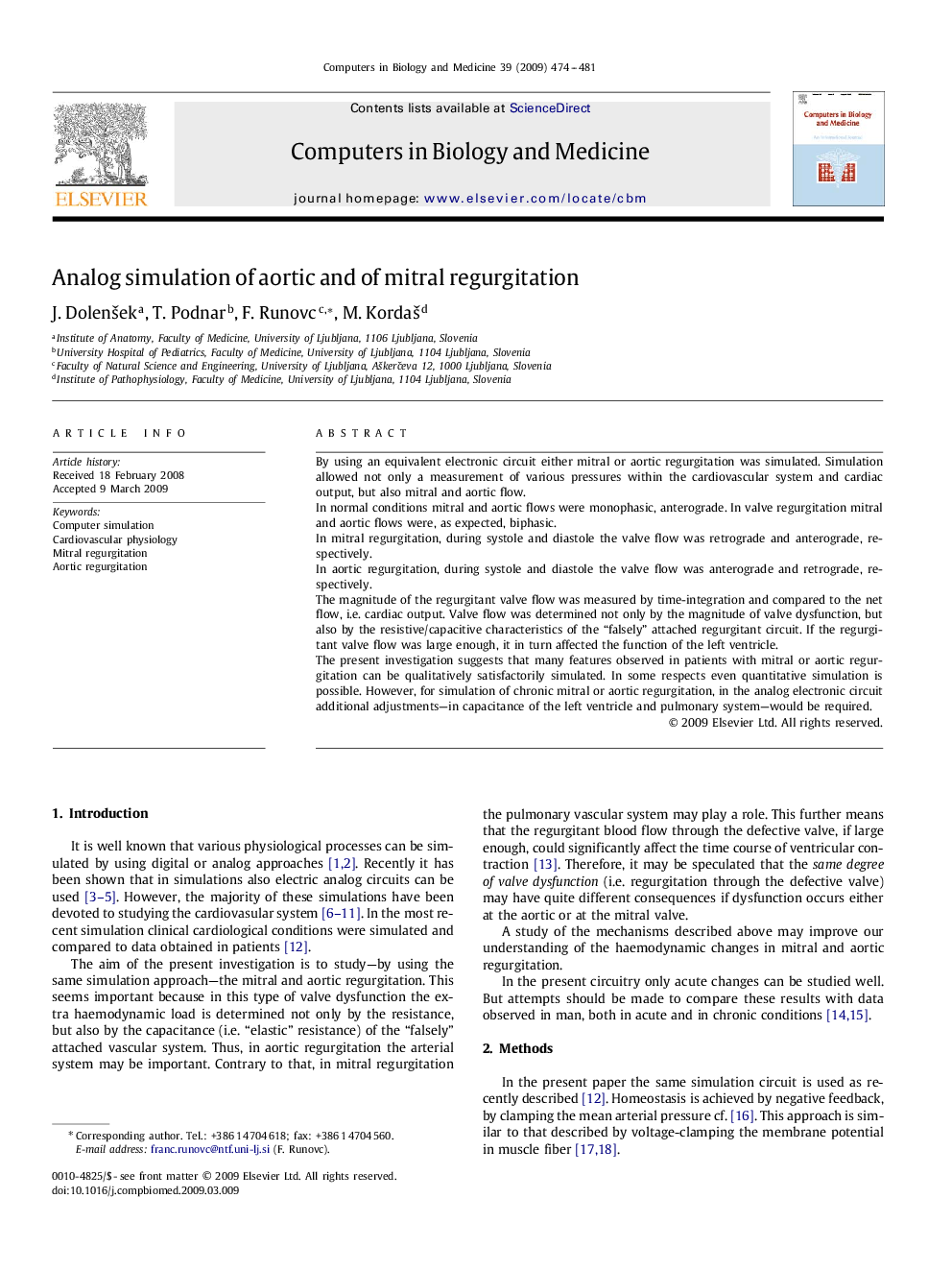| Article ID | Journal | Published Year | Pages | File Type |
|---|---|---|---|---|
| 505732 | Computers in Biology and Medicine | 2009 | 8 Pages |
By using an equivalent electronic circuit either mitral or aortic regurgitation was simulated. Simulation allowed not only a measurement of various pressures within the cardiovascular system and cardiac output, but also mitral and aortic flow.In normal conditions mitral and aortic flows were monophasic, anterograde. In valve regurgitation mitral and aortic flows were, as expected, biphasic.In mitral regurgitation, during systole and diastole the valve flow was retrograde and anterograde, respectively.In aortic regurgitation, during systole and diastole the valve flow was anterograde and retrograde, respectively.The magnitude of the regurgitant valve flow was measured by time-integration and compared to the net flow, i.e. cardiac output. Valve flow was determined not only by the magnitude of valve dysfunction, but also by the resistive/capacitive characteristics of the “falsely” attached regurgitant circuit. If the regurgitant valve flow was large enough, it in turn affected the function of the left ventricle.The present investigation suggests that many features observed in patients with mitral or aortic regurgitation can be qualitatively satisfactorily simulated. In some respects even quantitative simulation is possible. However, for simulation of chronic mitral or aortic regurgitation, in the analog electronic circuit additional adjustments—in capacitance of the left ventricle and pulmonary system—would be required.
